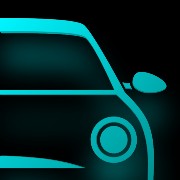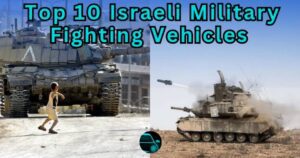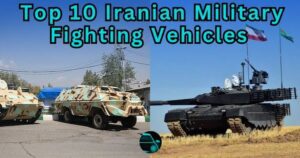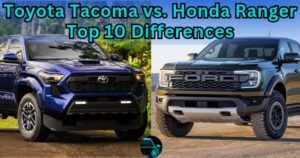In the modern era of military technology, two Middle Eastern nations—Israel and Iran—have developed some of the most formidable and capable fighting vehicles tailored to the unique challenges posed by their respective geopolitical landscapes. Both countries have invested heavily in their defense sectors, particularly in the development of fighting vehicles that serve as critical components of their military strategies.
This article offers a detailed comparison of the top 10 Israeli and Iranian military fighting vehicles, analyzing their design, technology, and operational capabilities. While Israel and Iran share a geographical region, their military philosophies and technological approaches differ significantly, as reflected in the vehicles they have developed.
Comparing 10 Israeli and Iranian Military Fighting Vehicles
1. Merkava IV (Israel) vs. Karrar MBT (Iran)

The Merkava IV, Israel’s main battle tank, is renowned for its innovative design, which prioritizes crew survivability and multi-role functionality. It boasts a unique front-engine layout that adds extra protection for the crew and the ability to transport additional personnel or evacuate wounded soldiers. Its advanced armor and the Trophy Active Protection System (APS) give it a significant edge on the battlefield. Armed with a 120mm smoothbore gun, the Merkava IV can engage enemy tanks and fortified positions with precision.

On the other hand, Iran’s Karrar main battle tank represents a leap in domestic armored vehicle production. The Karrar is equipped with reactive armor, modern fire control systems, and a 125mm smoothbore gun. While Iran claims the Karrar is comparable to Russia’s T-90, analysts note that it may still lack some of the advanced defensive systems present in Western and Israeli designs, such as the Trophy APS. Despite this, the Karrar serves as a symbol of Iran’s push for self-reliance in military hardware production.
2. Namer APC (Israel) vs. Boragh APC (Iran)

The Namer Armored Personnel Carrier (APC), based on the Merkava chassis, is one of the heaviest and most well-protected APCs in the world. Designed to carry infantry into battle safely, the Namer boasts thick armor, a remotely controlled weapon system, and the Trophy APS. It can carry up to 12 soldiers, providing them with the same level of protection as a main battle tank.

Iran’s Boragh APC is based on the Soviet BMP-1 design but has been significantly modified to meet Iranian military needs. While not as heavily armored or technologically advanced as the Namer, the Boragh is more lightweight, giving it greater mobility in difficult terrain. The Boragh is amphibious and can carry infantry and light weaponry into battle. However, it lacks the advanced protection systems found on Israel’s Namer, making it more vulnerable in high-threat environments.
3. Achzarit APC (Israel) vs. Sayyad APC (Iran)

The Achzarit, another Israeli APC, is based on the chassis of captured Soviet T-55 tanks, heavily modified to transport infantry in dangerous combat zones. Its thick armor and remotely operated weapons make it ideal for urban warfare and close-quarter combat. Like the Namer, the Achzarit prioritizes crew and troop safety, with several layers of protection designed to withstand anti-tank weapons.

In comparison, Iran’s Sayyad APC is a more basic armored personnel carrier, designed for light infantry transport. The Sayyad is based on the Mercedes-Benz Unimog chassis, making it lighter and less armored than the Achzarit. While it is highly mobile and versatile, the Sayyad lacks the level of protection and firepower of Israel’s Achzarit, making it suitable for lower-intensity conflicts where heavy armor is not as critical.
4. Eitan APC (Israel) vs. BTR-60PB (Iran)

The Eitan is Israel’s latest wheeled APC, designed as a more mobile and cost-effective alternative to the heavy Namer. It has eight wheels, providing excellent mobility in various terrains, and is armed with a 30mm cannon. Like other Israeli fighting vehicles, the Eitan is equipped with advanced armor and active protection systems, ensuring it can withstand modern battlefield threats.

Iran’s BTR-60PB is an older, Soviet-era wheeled APC that still forms a part of Iran’s mechanized forces. While the BTR-60PB is amphibious and offers good mobility, it is significantly outclassed by the Eitan in terms of protection, firepower, and technology. The BTR-60PB lacks the modern APS and advanced armor found on Israel’s Eitan, making it more vulnerable in high-threat environments.
5. Carmel Light Armored Vehicle (Israel) vs. Tosan Light Tank (Iran)

The Carmel is a new-generation light armored vehicle being developed by Israel with a focus on autonomous and AI-driven technologies. The Carmel represents Israel’s push towards integrating cutting-edge artificial intelligence and robotics into military vehicles, reducing the need for human crews. It is envisioned as a highly mobile, versatile platform capable of performing a wide range of missions with minimal human intervention.

Iran’s Tosan Light Tank, in contrast, is a more traditional design, with an emphasis on speed and maneuverability. The Tosan is equipped with a 90mm gun and is used for reconnaissance and light combat roles. While it is not as technologically advanced as the Carmel, the Tosan is well-suited for Iran’s needs, particularly in mountainous and desert regions where heavier tanks might struggle.
6. Pereh Anti-Tank Missile Carrier (Israel) vs. Raad-2 Anti-Tank Vehicle (Iran)

The Pereh is one of the most secretive and unique Israeli fighting vehicles, disguised as a tank but actually a platform for launching anti-tank guided missiles. The Pereh carries a large number of Tamuz missiles (Spike) with a range of up to 25 kilometers, allowing it to engage enemy armor from a safe distance. The vehicle’s ability to blend in as a standard tank gives it a strategic advantage on the battlefield.

Iran’s Raad-2, an anti-tank vehicle, is based on the Russian BMP-1 chassis and is equipped with a 105mm gun. The Raad-2 is designed for direct engagements with enemy armor but lacks the long-range missile capabilities of Israel’s Pereh. While effective in conventional anti-tank roles, the Raad-2 does not offer the same level of strategic versatility as the Pereh, which can engage targets from much greater distances.
7. SandCat Light Armored Vehicle (Israel) vs. Safir Jeep (Iran)

The SandCat is a light armored vehicle developed by Israel’s Plasan, designed for reconnaissance, patrol, and urban combat. It is highly mobile and provides excellent protection against small arms fire, IEDs, and mines. The SandCat is modular, allowing it to be configured for various missions, from troop transport to command and control operations.

Iran’s Safir Jeep, on the other hand, is a more basic, light utility vehicle. While the Safir can be armed with anti-tank missiles or machine guns, it lacks the advanced armor and protection systems of the SandCat. The Safir is more suited for low-intensity conflicts or support roles, whereas Israel’s SandCat is designed for use in more hostile environments where protection and firepower are critical.
8. Magach 7C (Israel) vs. Zulfiqar MBT (Iran)

The Magach 7C is an upgraded version of the American M60 Patton tank, extensively modified by Israel to meet modern battlefield requirements. With improved armor, advanced fire control systems, and explosive reactive armor, the Magach 7C remains a formidable vehicle, despite its older design.

Iran’s Zulfiqar main battle tank is a domestic design that combines elements from the Soviet T-72 and American M60 tanks. The Zulfiqar has been continuously upgraded since its introduction, with the latest versions featuring improved armor and firepower. While Iran’s Zulfiqar holds its own in regional conflicts, it lacks the advanced protective systems and combat experience of Israel’s Magach 7C.
9. Merkava ARV (Israel) vs. BMT-2 Recovery Vehicle (Iran)

The Merkava Armored Recovery Vehicle (ARV) is based on the Merkava tank chassis and is designed to recover damaged tanks and other fighting vehicles during battle. It is heavily armored, allowing it to operate under fire and perform field repairs in hostile environments.

Iran’s BMT-2 Recovery Vehicle, based on the Soviet T-72 chassis, serves a similar purpose but lacks the same level of armor protection as the Merkava ARV. Both vehicles are essential for maintaining operational readiness on the battlefield, but the Israeli vehicle offers greater protection and mobility, reflecting Israel’s focus on survivability in combat zones.
10. M109 Doher Howitzer (Israel) vs. HM41 Howitzer (Iran)

The M109 Doher is an upgraded version of the American M109 self-propelled howitzer, modified by Israel to meet its artillery requirements. The Doher provides long-range fire support with its 155mm gun, and its advanced fire control system allows for rapid and accurate targeting.

Iran’s HM41 Howitzer is based on a domestic upgrade of the American M114 towed howitzer. While the HM41 offers significant firepower, it lacks the mobility and advanced targeting systems of Israel’s M109 Doher, making it less versatile in dynamic combat situations.
Conclusion
In conclusion, the fighting vehicles developed by Israel and Iran reflect their distinct military strategies and technological capabilities. Israel’s vehicles tend to emphasize crew protection, advanced technology, and versatility, often integrating the latest in active protection systems and artificial intelligence. In contrast, Iran has focused on self-reliance and adapting older platforms with modern upgrades to meet its defense needs. Both nations continue to invest in their armored forces, recognizing the critical role these vehicles play in modern warfare.
FAQs About 10 Israeli and Iranian Military Fighting Vehicles
1. What are the main differences between Israeli and Iranian military fighting vehicles?
The primary difference between Israel’s and Iran’s military fighting vehicles lies in their design philosophy and technological advancement. Israel focuses on advanced protection systems, superior firepower, and the incorporation of modern technologies like the Trophy Active Protection System (APS) and artificial intelligence. The Merkava IV main battle tank, for example, prioritizes crew protection and survivability, with a front-engine design and advanced armor. Israeli vehicles also tend to be highly adaptable, such as the Namer APC, which provides both troop transport and fire support in one platform.
Iran, on the other hand, has focused heavily on self-reliance in producing its fighting vehicles. While Iran has made strides in domestic manufacturing, such as the Karrar MBT and Zulfiqar MBT, many of their vehicles are based on older designs like the Soviet BMP and T-72, which are modernized but lack some of the advanced systems seen in Israeli models. Iranian vehicles tend to emphasize affordability and utility, adapting legacy platforms for modern conflicts, rather than investing heavily in cutting-edge technologies.
2. Which Israeli and Iranian tanks are considered the most advanced?
The Merkava IV is widely regarded as Israel’s most advanced main battle tank. It features a 120mm smoothbore gun, heavy armor, and the Trophy APS, making it one of the best-protected tanks in the world. The Merkava IV is also known for its unique design, which places the engine at the front of the vehicle to improve crew survivability. It can also transport infantry or evacuate wounded soldiers, offering multi-role capabilities.
Iran’s Karrar MBT is considered the most advanced tank produced domestically. It features a 125mm gun, reactive armor, and modern fire control systems. The Karrar has been marketed as a competitor to Russia’s T-90, though it may lack some of the more advanced features of its Israeli counterparts, such as the Trophy APS. Nevertheless, the Karrar represents Iran’s push towards self-reliance and improving its armored forces.
3. How do Israeli and Iranian armored personnel carriers (APCs) compare?
The Namer APC, built on the Merkava tank chassis, is one of the heaviest and most well-protected APCs globally. Its thick armor, active protection systems, and ability to transport up to 12 soldiers make it a highly capable vehicle for both transport and combat support. Israel’s emphasis on crew and troop protection is evident in the Namer, which shares many of the protective features of the Merkava tank.
In contrast, Iran’s Boragh APC, based on the Soviet BMP-1 design, is lighter and more mobile but lacks the heavy armor and advanced protection systems of Israel’s Namer. The Boragh is amphibious and well-suited for the type of terrain in Iran, but in terms of protection and technological sophistication, it is outclassed by its Israeli counterpart. Iran focuses more on mobility and versatility, which aligns with its military doctrine, but at the cost of sacrificing some protection.
4. Which fighting vehicles are better suited for urban warfare, Israeli or Iranian?
For urban warfare, Israel’s vehicles are particularly well-suited due to their emphasis on protection and versatility. The Achzarit APC, based on a heavily modified T-55 tank chassis, is designed for close-quarters combat in dense urban environments. Its thick armor and remote-controlled weapons allow it to operate effectively in these scenarios while keeping the crew and infantry safe. Similarly, the SandCat, a light armored vehicle, provides mobility and protection for urban patrols and reconnaissance.
Iran’s Sayyad APC, which is based on the Mercedes-Benz Unimog chassis, is more lightly armored and designed for mobility rather than heavy protection. While it is effective for light infantry transport in lower-intensity conflicts, it does not offer the same level of protection as Israel’s Achzarit or other vehicles. In high-threat urban combat zones, Israel’s fighting vehicles would likely perform better due to their superior armor and technology.
5. How does the use of technology differ between Israeli and Iranian fighting vehicles?
Israel is known for integrating cutting-edge technology into its military vehicles, with a strong focus on survivability and battlefield awareness. The Trophy Active Protection System (APS) is a prime example, designed to intercept and neutralize incoming threats like anti-tank missiles before they can hit the vehicle. Israel also invests in artificial intelligence, as seen with the development of the Carmel Light Armored Vehicle, which incorporates AI for autonomous operation and decision-making on the battlefield.
Iran, while advancing in its technological capabilities, focuses more on modernizing older platforms with new fire control systems, reactive armor, and domestic adaptations of existing technology. Iranian vehicles like the Karrar MBT and Zulfiqar MBT feature upgrades such as better targeting systems and armor, but they generally lag behind Israel in terms of cutting-edge technology like active protection systems and AI integration. Iran’s approach emphasizes practical, cost-effective solutions rather than groundbreaking technological innovations.




